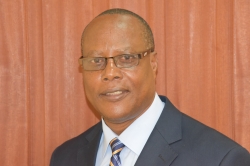Equity in education is seen in two dimensions: fairness and inclusion. Equity as fairness implies that personal or socio-economic circumstances, such as gender, ethnic origin or family background are not obstacles to educational success. Equity as inclusion means ensuring that all students reach at least a basic minimum level of skills. Equitable education systems are fair and inclusive if they support their students in reaching their learning potential without either formally or informally pre-setting barriers or lowering expectations. In the context of learning, an equitable education system allows individuals to take full advantage of education and training irrespective of their background.
Equity’s goal is to create a school-based climate and culture that demands and supports systemic fairness and improved achievement for each student while narrowing the current and predictable tribal achievement gap. This type of atmosphere can be best fostered by improving the school’s capacity to design and deliver equity-centered professional development for instructional staff, as well as improving equity-centered curriculums, instructional leadership and support, and assessment practices by teachers in an anti-biased environment.
Equity pedagogy can be applied through steps such as: fostering a cooperative learning environment proven to benefit students from diverse racial/ethnic backgrounds, while also developing teaching strategies and modifying the curriculum to enable students to learn more effectively. Doing this allows for curriculum and pedagogy to become culturally relevant and equitable, so students from diverse backgrounds – especially those who have been socio-economically, linguistically, and culturally marginalized – can succeed in school as well as the outside society.
Further, equity pedagogy includes Project Based Learning (PBL) which allows teachers to tailor student’s learning experiences in ways that are significantly motivating to them, and to enable students to create projects based on their specific needs and desires. When equity pedagogy is applied to any subject, the classroom becomes a place for growth and affirmation for all diverse students. Teachers can then make everyday changes to their lessons to better meet the needs of their students through the abundance of strategies geared to ensure that meaningful learning can take place.
Inclusive education is an approach that challenges exclusionary policies and practices so as to address the learning needs of all learners in regular schools and classrooms. Inclusive education is when all students, regardless of any challenges they may have, are placed in age-appropriate general education classes that are in their own neighborhood schools to receive high-quality instruction, interventions, and supports that enable them to meet success in the core curriculum.
Under inclusive education, the school and classroom operate on the premise that students with disabilities are as fundamentally competent as students without disabilities. Therefore, all students can be full participants in their classrooms and in the local school community. This means they are with their peers without disabilities to the highest degree possible, with general education the placement of the first choice for all students (Alquraini & Gut, 2012).
Thus, successful inclusive education happens primarily through accepting, understanding, and attending to student differences and diversity, which can include physical, cognitive, academic, social, and emotional. The driving principle is to make all students feel welcomed, appropriately challenged, and supported in their efforts.
The learning process can be activated with children of very different abilities by:
• Designing a curriculum that is all-inclusive and addresses learners with special needs.
• Developing varied teaching methods to suit different learners.
• Fast-tracking learners of higher age.
• Enhancing quality control through the work of Quality Assurance and Standards.
• Preparing teachers to adequately identify and meet the varied needs of the learners.


4 comments
I am humbled by this first post. I am motivated and promise to continue with my contribution to the Adventist Educators Blog, representing ECD.
It is always an honor to have your participation, Dr. Akoto!
Dear Editorial Team,
Today, October 30th 2021, I read this to Dr. Martin Akoto, and he says when God allows, he would like to continue contributing to this blog.
Amen.
Thank you for your feedback, Mr. Edward. It is a pleasure to hear about his commitment to this project and Adventist Education. God bless!